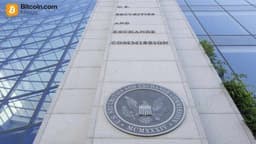About USTC
TerraClassicUSD (USTC) is a decentralized, algorithmic stablecoin that was previously pegged to the value of the US dollar. Launched in 2020 as part of the Terra ecosystem, a decentralized finance (DeFi) platform, USTC aimed to provide a stable and scalable solution for digital payments and transactions. Although it was designed to maintain a 1:1 peg with the US dollar, USTC experienced a significant depegging event in May 2022, resulting in a sharp decline in its value. Despite this, USTC remains a notable example of an algorithmic stablecoin, and its story serves as a cautionary tale about the risks and challenges associated with this type of cryptocurrency. With its complex algorithmic mechanism and tumultuous history, USTC is a highly speculative and volatile asset that is not recommended for investment. However, it continues to be traded on some cryptocurrency exchanges, and its story remains an important part of the cryptocurrency market's history and evolution.
Convert Fiat to TerraClassicUSD
News
Loading...Frequently Asked Questions about TerraClassicUSD
What is TerraClassicUSD (USTC)?
TerraClassicUSD (USTC) is a decentralized, algorithmic stablecoin that was previously pegged to the value of the US dollar. It was launched in 2020 as part of the Terra ecosystem, a decentralized finance (DeFi) platform that aimed to provide a stable and scalable solution for digital payments and transactions.
How did TerraClassicUSD (USTC) maintain its peg to the US dollar?
TerraClassicUSD (USTC) used a complex algorithmic mechanism to maintain its peg to the US dollar. The mechanism involved the use of a sister token, LUNA, which was used to absorb price volatility and maintain the stability of USTC. However, this mechanism failed in May 2022, resulting in a significant depegging of USTC from the US dollar.
What happened to TerraClassicUSD (USTC) in May 2022?
In May 2022, TerraClassicUSD (USTC) experienced a significant depegging from the US dollar, resulting in a sharp decline in its value. This event was triggered by a combination of factors, including a loss of confidence in the Terra ecosystem, a decline in the value of LUNA, and a subsequent bank run on USTC. The depegging of USTC had a significant impact on the cryptocurrency market, leading to a decline in the value of many other assets.
Is TerraClassicUSD (USTC) still a stablecoin?
No, TerraClassicUSD (USTC) is no longer considered a stablecoin. Following the depegging event in May 2022, USTC has not been able to regain its peg to the US dollar. As a result, it is now considered a volatile cryptocurrency, subject to significant price fluctuations.
What is the current status of the Terra ecosystem?
The Terra ecosystem is currently undergoing a significant transformation. Following the depegging of USTC, the Terra team has launched a new coin, Terra 2.0. However, the future of the Terra ecosystem remains uncertain, and it is unclear whether it will be able to regain its former popularity and adoption.
Where can I buy and trade TerraClassicUSD (USTC)?
TerraClassicUSD (USTC) can be bought and traded on some cryptocurrency exchanges, such as Binance, KuCoin and OKX, although its availability may be limited due to its volatility and lack of stability. It is essential to exercise caution when trading USTC, as its value can fluctuate significantly and rapidly.
Is TerraClassicUSD (USTC) a good investment?
TerraClassicUSD (USTC) is a highly speculative and volatile asset, and it is not recommended for investment. The depegging event in May 2022 has significantly impacted the value and stability of USTC, and it is unclear whether it will be able to regain its former value. As with any investment, it is essential to do your own research, consider the risks and potential rewards, and make an informed decision based on your individual financial goals and risk tolerance.






